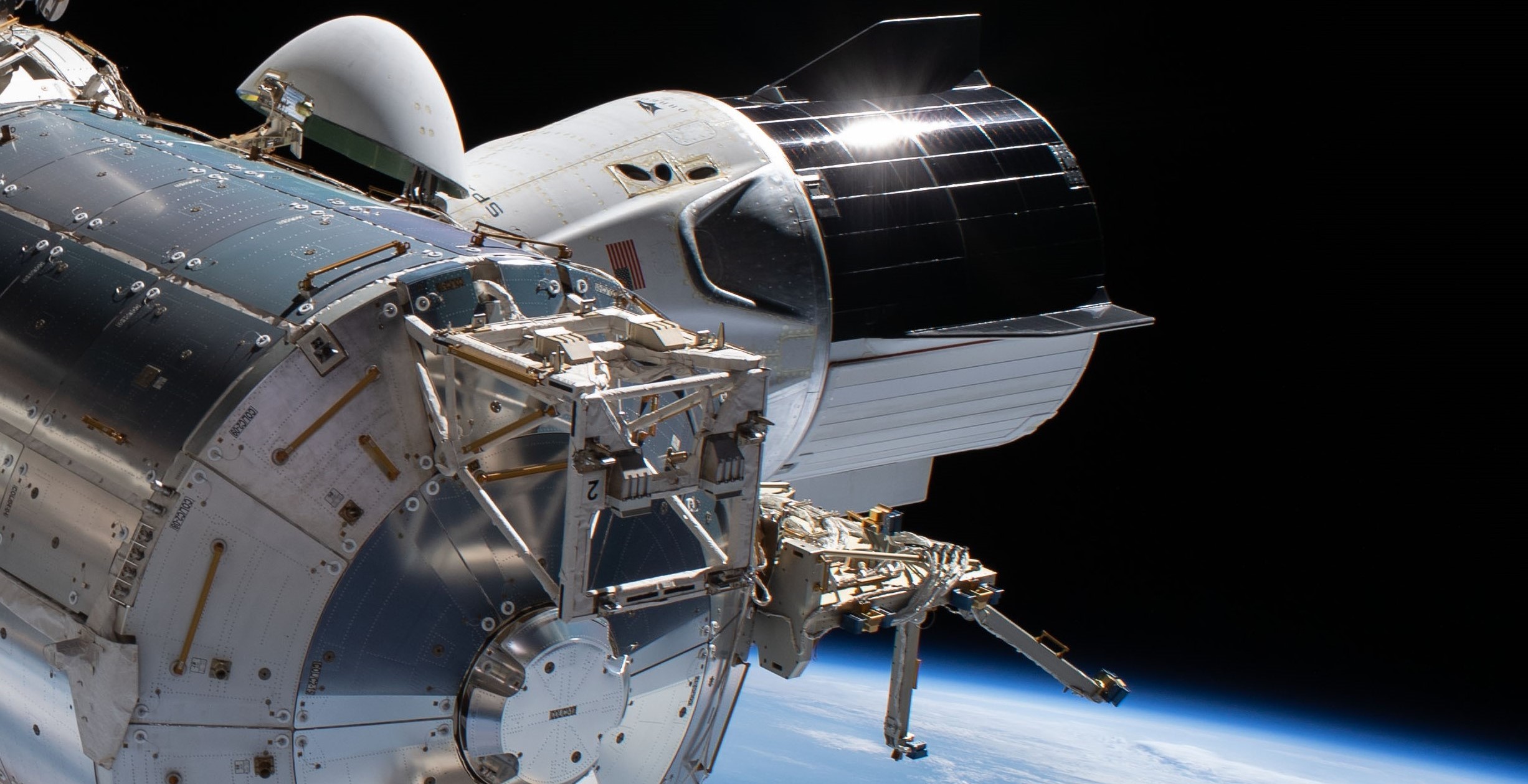
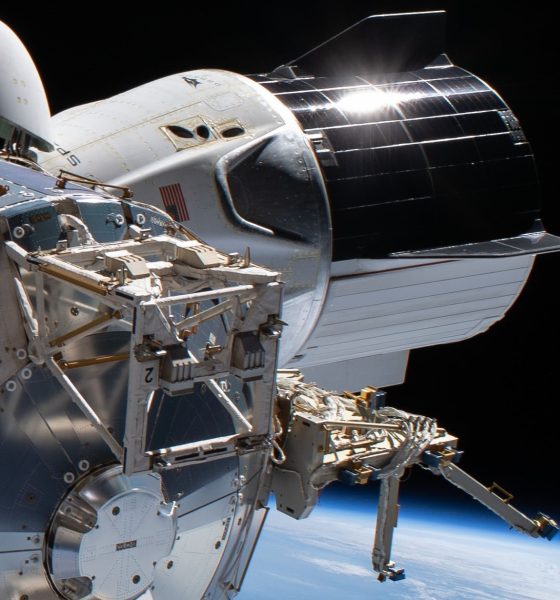
News
SpaceX Crew Dragon spacecraft caught on camera during NASA astronaut spacewalk
SpaceX’s first astronaut-proven Crew Dragon spacecraft has been caught on camera by one of the two NASA astronauts that piloted it during a routine spacewalk to repair the orbital International Space Station (ISS).
While outside the station to replace aging lithium ion batteries tasked with storing solar energy and powering the ISS during orbital night, NASA astronaut Bob Behnken was also able to take photos. Documenting the complex task that must be done during extravehicular activities (EVAs/spacewalks) is a routine and crucial part of ensuring that things go according to plan and knowing what went wrong when they don’t.
As an excellent side effect of that important work, some of those same photos can be less technical and more whimsical, capturing spectacular views of the orbital outpost. For the current crew, the location of the batteries that needed to be replaced luckily coincided with the location of most US docking and berthing ports, creating an opportunity for the two NASA astronauts to capture photos of the newest addition to the space station.
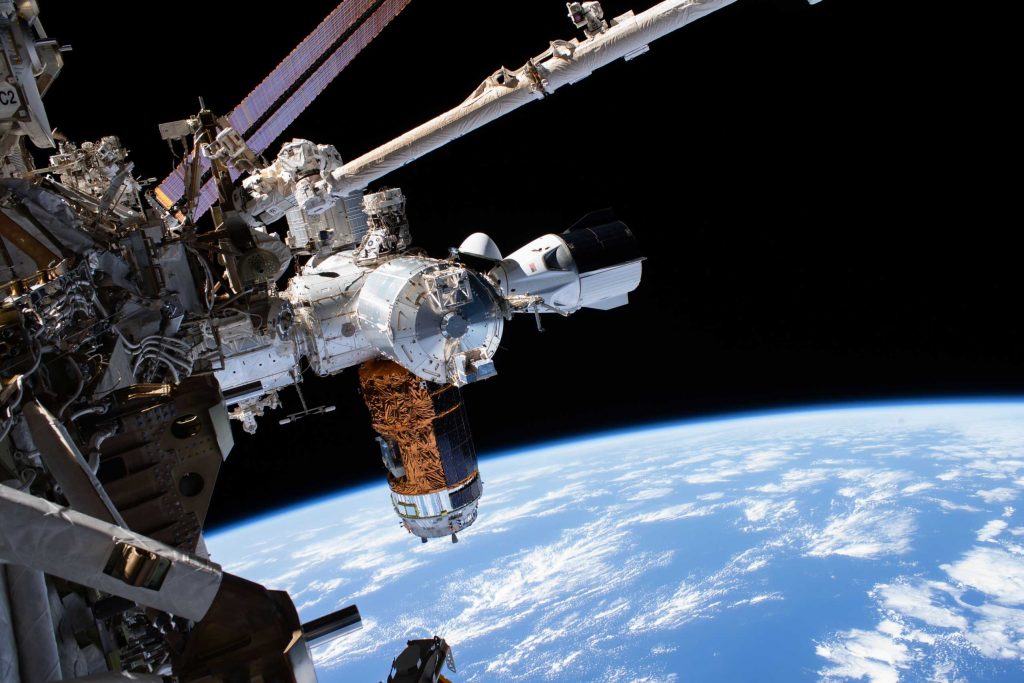
SpaceX’s historic Crew Dragon spacecraft has now spent more than a month in orbit since its May 30th astronaut launch debut and May 31st space station arrival. Crew Dragon is the seventh US spacecraft ever to launch astronauts into orbit in more than half a century of human spaceflight, making NASA’s photos of the vehicle all the more significant.
While decidedly less significant, as of July 3rd, Crew Dragon capsule C206 is also just 5-6 days away from breaking SpaceX’s record for a longest-duration orbital spaceflight – currently held by Cargo Dragon C111 and C112 after ~39.5 days spent in orbit.
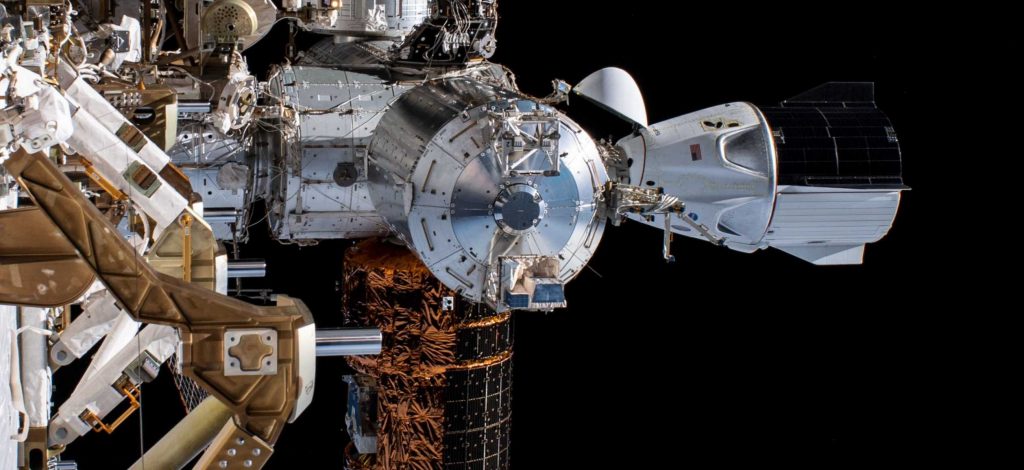
Short of a major emergency, the Demo-2 Crew Dragon is all but guaranteed to smash that record. According to current plans, the spacecraft is scheduled to attempt the second, equally critical half of its demonstration mission – safely returning NASA astronauts Bob Behnken and Doug Hurley to Earth – no earlier than (NET) August 2nd. NASA has to balance its competing needs for Crew Dragon to complete its Demo-2 mission sooner than later and the completion of several critical maintenance tasks (several involving spacewalks like the one on July 1st) while the space agency has a full crew compliment aboard the ISS.
When Behnken and Hurley depart the ISS in August, NASA will have just one crew member – Chris Cassidy – aboard the station until SpaceX and the space agency are ready for their second Crew Dragon astronaut mission. Known as Post Certification Mission 1 (PCM-1) or Crew-1, a brand new Crew Dragon is scheduled to launch four astronauts – three NASA and one JAXA (Japan’s space agency) – no sooner than six weeks after Demo-2 successfully splashes down. If things don’t go perfectly during Crew Dragon’s first crewed reentry, descent, and landing, that gap will grow significantly.
Either way, it’s likely that Crew Dragon C206 will spend at least 60-70 days in orbit before SpaceX and NASA attempt to return Behnken and Hurley to Earth. For now, the historic Dragon spacecraft will get to enjoy at least a few more weeks at the International Space Station.
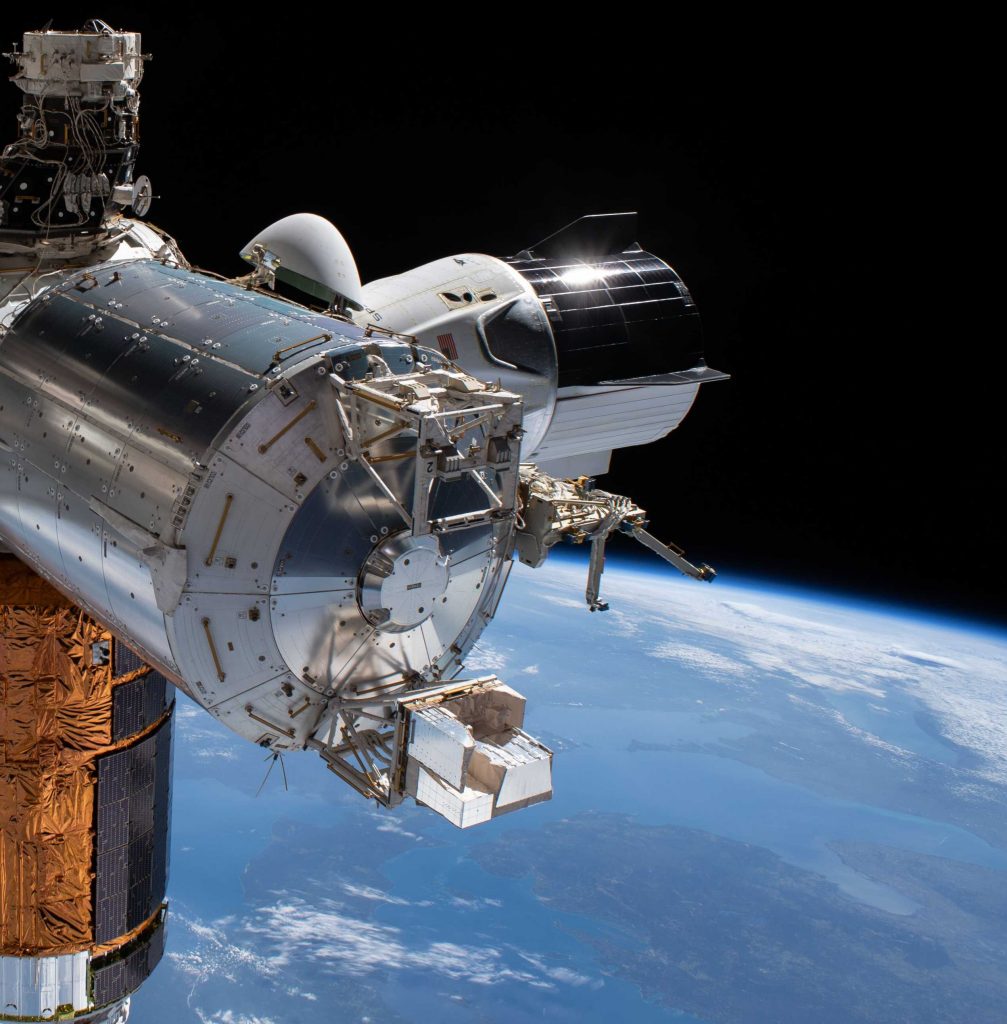
Check out Teslarati’s Marketplace! We offer Tesla accessories, including for the Tesla Cybertruck and Tesla Model 3.

News
Tesla China delivery centers look packed as 2025 comes to a close
Needless to say, it appears that Tesla China seems intent on ending 2025 on a strong note.

Tesla’s delivery centers in China seem to be absolutely packed as the final days of 2025 wind down, with photos on social media showing delivery locations being filled wall-to-wall with vehicles waiting for their new owners.
Needless to say, it appears that Tesla China seems intent on ending 2025 on a strong note.
Full delivery center hints at year-end demand surge
A recent image from a Chinese delivery center posted by industry watcher @Tslachan on X revealed rows upon rows of freshly prepared Model Y and Model 3 units, some of which were adorned with red bows and teddy bears. Some customers also seem to be looking over their vehicles with Tesla delivery staff.
The images hint at a strong year-end push to clear inventory and deliver as many vehicles as possible. Interestingly enough, several Model Y L vehicles could be seen in the photos, hinting at the demand for the extended wheelbase-six seat variant of the best-selling all-electric crossover.
Strong demand in China
Consumer demand for the Model Y and Model 3 in China seems to be quite notable. This could be inferred from the estimated delivery dates for the Model 3 and Model Y, which have been extended to February 2026 for several variants. Apart from this, the Model Y and Model 3 also continue to rank well in China’s premium EV segment.
From January to November alone, the Model Y took China’s number one spot in the RMB 200,000-RMB 300,000 segment for electric vehicles, selling 359,463 units. The Model 3 sedan took third place, selling 172,392. This is quite impressive considering that both the Model Y and Model 3 are still priced at a premium compared to some of their rivals, such as the Xiaomi SU7 and YU7.
With delivery centers in December being quite busy, it does seem like Tesla China will end the year on a strong note once more.
News
Tesla Giga Berlin draws “red line” over IG Metall union’s 35-hour week demands
Factory manager André Thierig has drawn a “red line” against reducing Giga Berlin’s workweek to 35 hours, while highlighting that Tesla has actually increased its workers’ salaries more substantially than other carmakers in the country.

Tesla Giga Berlin has found itself in a new labor dispute in Germany, where union IG Metall is pushing for adoption of a collective agreement to boost wages and implement changes, such as a 35-hour workweek.
In a comment, Giga Berlin manager André Thierig drew a “red line” against reducing Giga Berlin’s workweek to 35 hours, while highlighting that Tesla has actually increased its workers’ salaries more substantially than other carmakers in the country.
Tesla factory manager’s “red line”
Tesla Germany is expected to hold a works council election in 2026, which André Thierig considers very important. As per the Giga Berlin plant manager, Giga Berlin’s plant expansion plans might be put on hold if the election favors the union. He also spoke against some of the changes that IG Metall is seeking to implement in the factory, like a 35-hour week, as noted in an rbb24 report.
“The discussion about a 35-hour week is a red line for me. We will not cross it,” Theirig said.
“(The election) will determine whether we can continue our successful path in the future in an independent, flexible, and unbureaucratic manner. Personally, I cannot imagine that the decision-makers in the USA will continue to push ahead with the factory expansion if the election results favor IG Metall.”
Giga Berlin’s wage increase
IG Metall district manager Jan Otto told the German news agency DPA that without a collective agreement, Tesla’s wages remain significantly below levels at other German car factories. He noted the company excuses this by referencing its lowest pay grade, but added: “The two lowest pay grades are not even used in car factories.”
In response, Tesla noted that it has raised the wages of Gigafactory Berlin’s workers more than their German competitors. Thierig noted that with a collective agreement, Giga Berlin’s workers would have seen a 2% wage increase this year. But thanks to Tesla not being unionized, Gigafactory Berlin workers were able to receive a 4% increase, as noted in a CarUp report.
“There was a wage increase of 2% this year in the current collective agreement. Because we are in a different economic situation than the industry as a whole, we were able to double the wages – by 4%. Since production started, this corresponds to a wage increase of more than 25% in less than four years,” Thierig stated.
News
Tesla is seeing a lot of momentum from young Koreans in their 20s-30s: report
From January to November, young buyers purchased over 21,000 Teslas, putting it far ahead of fellow imported rivals like BMW and Mercedes-Benz.

Tesla has captured the hearts of South Korea’s 20s-30s demographic, emerging as the group’s top-selling imported car brand in 2025. From January to November, young buyers purchased over 21,000 Teslas, putting it far ahead of fellow imported rivals like BMW and Mercedes-Benz.
Industry experts cited by The Economist attributed this “Tesla frenzy” to fandom culture, where buyers prioritize the brand over traditional car attributes, similar to snapping up the latest iPhone.
Model Y dominates among young buyers
Data from the Korea Imported Automobile Association showed that Tesla sold 21,757 vehicles to the 20s-30s demographic through November, compared to BMW’s 13,666 and Mercedes-Benz’s 6,983. The Model Y led the list overwhelmingly, with variants like the standard and Long Range models topping purchases for both young men and women.
Young men bought around 16,000 Teslas, mostly Model Y (over 15,000 units), followed by Model 3. Young women followed a similar pattern, favoring Model Y (3,888 units) and Model 3 (1,083 units). The Cybertruck saw minimal sales in this group.
The Model Y’s appeal lies in its family-friendly SUV design, 400-500 km range, quick acceleration, and spacious cargo, which is ideal for commuting and leisure. The Model 3, on the other hand, serves as an accessible entry point with lower pricing, which is valuable considering the country’s EV subsidies.
The Tesla boom
Experts described Tesla’s popularity as “fandom culture,” where young buyers embrace the brand despite criticisms from skeptics. Professor Lee Ho-geun called Tesla a “typical early adopter brand,” comparing purchases to iPhones.
Professor Kim Pil-soo noted that young people view Tesla more as a gadget than a car, and they are likely drawn by marketing, subsidies, and perceived value. They also tend to overlook news of numerous recalls, which are mostly over-the-air software updates, and controversies tied to the company.
Tesla’s position as Korea’s top import for 2025 seems secured. As noted by the publication, Tesla’s December sales figures have not been reported yet, but market analysts have suggested that Tesla has all but secured the top spot among the country’s imported cars this year.








